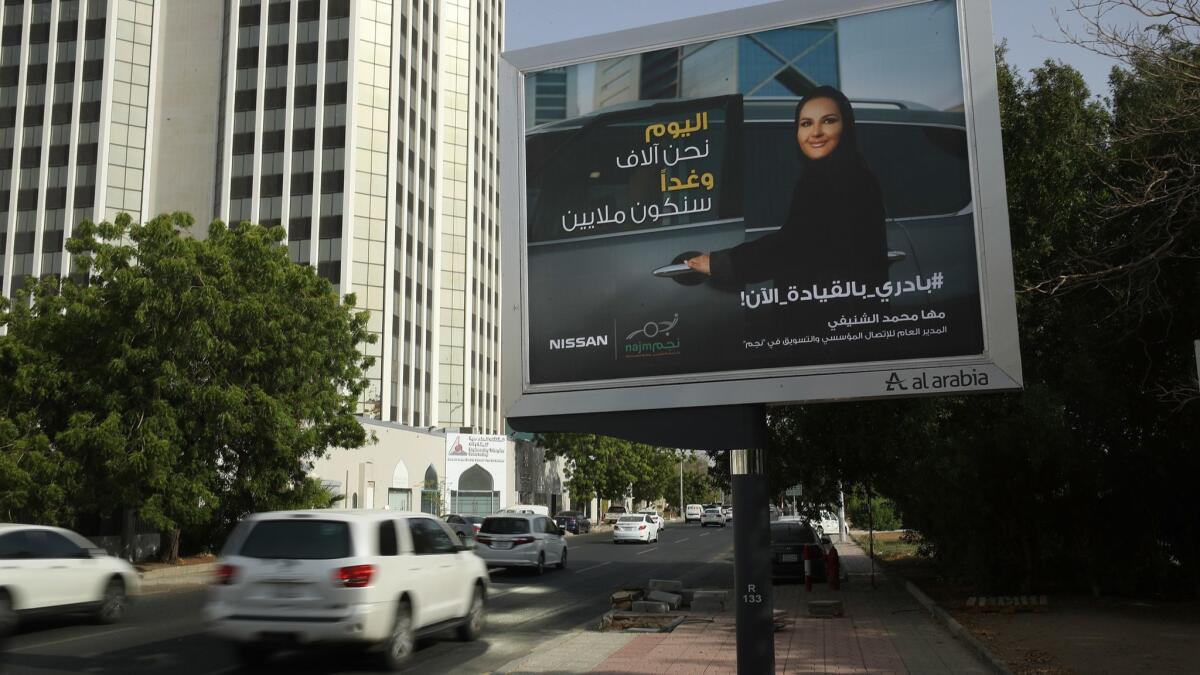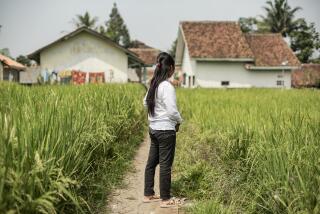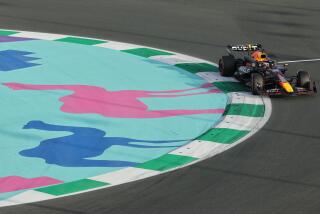Saudi Arabia’s women are allowed to drive, but not everyone is happy about it

- Share via
Reporting from Beirut — From the very first day 31-year-old Salma Barakati got behind the wheel of her car after Saudi Arabia lifted the ban on women driving, the men in her village near Mecca would gather around her and unleash a torrent of insults.
The insults soon turned to threats. Then, less than 10 days after women were allowed to drive, a neighbor woke up Barakati in the middle of the night: Her car was on fire.
“The men of the neighborhood burned the car because they are all against [women] driving, they don’t agree with it,” she said in a video shared on Twitter, her voice shaking as flames engulfed her vehicle.
“Save me from them, take back my rights from them,” she pleads with King Salman and his son, Crown Prince Mohammed bin Salman, thought to be the primary force behind a modernization drive that included the ban’s overturn.
Despite months of an intensely orchestrated feel-good campaign by the government, the smoldering remains of Barakati’s car offered the starkest illustration that not all are on board with women in the driver’s seat. Grumbling about the ban also hints at the resistance facing Salman and his son as they upend decades-old social mores and bring changes to Saudi society that much of the world has long taken for granted.
It was last September when the government decreed it would allow women to drive, reversing a policy in place since 1957 and which had become a potent symbol of women’s oppression in the kingdom.
That Riyadh was eager to reap a public relations win from the decree was clear from the preparations around the announcement: a reading of the decree on live television was accompanied by a lavish media event in Washington. It was reported to have used Cambridge Analytica, the British firm notorious for social media manipulation, to massage the blow to the country’s ultraconservatives.
Car companies, eager for new customers, quickly joined in with a raft of ads. Some featured abaya-clad women walking in a desert, their robes flowing in the dusk breeze as they look into the distance. Others urged women to “dare greatly” or assured them “the road is yours.”
But the reversal, which took effect June 24, flies against years of cultural and religious justifications trotted out by the country’s religious clerics. Allowing women to drive, they declared, would invite promiscuity. One cleric insisted driving could damage women’s ovaries, while another justified the ban on the grounds that women possessed only half a brain — and half of that was used for shopping, he claimed.
Despite the government stripping religious authorities of much of their power this year — a move that included rounding up 30 high-profile clerics — those attitudes lingered.
A YouGov survey conducted before the ban was lifted found that nearly a quarter of Saudis opposed its reversal. A video posted on Twitter featured a man swearing he would burn a woman and her car if it broke down. Others tweeted under the hashtag “You will not drive” and suggested creating a women-only lane so they could crash into one another.
Although the driving ban was lifted, the kingdom has far from abandoned tradition and the government maintains strict control on life in the kingdom. Riyadh continues in what the rights group Amnesty International called “an unrelenting crackdown” that has ensnared activists who for decades had fought for the right to drive.
On Wednesday, Amnesty International reported the arrest of human rights activists Samar Badawi and Nassima Sada.
“These brave women represented the last vestiges of the human rights community in the country, and now they too have been detained,” Lynn Maalouf, the group’s Middle East research director, said in a statement. The grounds for their arrest are unclear.
“Saudi Arabia’s new leadership under Crown Prince Mohammed bin Salman has crushed any space for the existence of human rights defenders in the country.”
As for resistance to women driving, there have only been a few incidents like the burning of Barakati’s car, said Maha Akeel, a Jidda-based journalist.
“Most of the men who see a woman driving, sure, they stare, but it’s OK,” she said in a phone interview on Tuesday, chuckling at the thought.
Although a woman does not need permission from a male guardian to obtain a license — a rare exception in the country’s onerous guardianship system, which gives men power over most aspects of women’s lives — many women seemed reluctant to take the step, said Karim Zein, of the Abu Dhabi branch of the M&C Saatchi advertising agency.
“Our research showed us that women were happy and excited about the decision, but there was fear, and the fear was men,” Zein said in a phone interview. “It wasn’t about confidence, it wasn’t about abilities: It was fear of men who for a long time have been dominating society.”
Walid Kanaan, chief creative officer at TBWA/RAAD, an advertising agency that works with Nissan in Saudi Arabia, agreed.
“We realized that the resistance for this decree was growing in Saudi Arabia in the society, and a large number of women were intimidated by this resistance…. They were afraid that if they got their permit they might disappoint their father or their brother or the man at home,” Kanaan said.
Both agencies produced ads focusing on Saudi men’s reaction to the decree: M&C Saatchi’s clip for Shell Middle East depicted a group of men speaking to the camera as they come to terms with women from their family driving, while Nissan filmed women taking a driving lesson with a close male relative as the instructor. Both videos prompted intense discussions on social media.
Saudi authorities said in June that more than 120,000 women have applied for licenses, but commentators have reported only a small number of women on the road. Akeel, however, said this observation could be misleading because Saudi Arabia’s roads are less active during the summer.
“With the return of people to schools and work after vacation, we’ll see more crowds, and then we’ll see more accidents, but for now I see that things are positive,” she said, adding that many women were still in the process of buying a car and taking lessons.
Yet what is accepted in cities such as Jidda and Riyadh is harder to take in places like Barakati’s village of Samad, a place where the stereotype of the rich male Saudi — mansion-dwelling and cavorting from one French Riviera resort to another — is nowhere to be found.
Barakati, who works as a supermarket cashier for a monthly salary of $1,066, would spend half of it each month on taxis. She had paid almost $700 for driving lessons and pooled her money with other women to buy a used car, according to the Saudi Okaz daily newspaper.
She later found out that the neighbor who told her about her car burning had actually planned the whole affair along with two other men.
Their families had pressured Barakati to pardon them, even offering to pool their money and buy her a new car, but she refused. (She did, however, accept a car given to her by Fahd Al-Rouqi, the deputy chairman of Mecca’s municipal council.)
“I asked the police to protect me against retaliation by the families. They were determined to take revenge because I sent their children into police custody. I will never relinquish my rights,” she said in an interview with Okaz.
“The incident will not deter me. I will never go back on my decision to drive.”
Twitter: @nabihbulos
More to Read
Sign up for Essential California
The most important California stories and recommendations in your inbox every morning.
You may occasionally receive promotional content from the Los Angeles Times.











